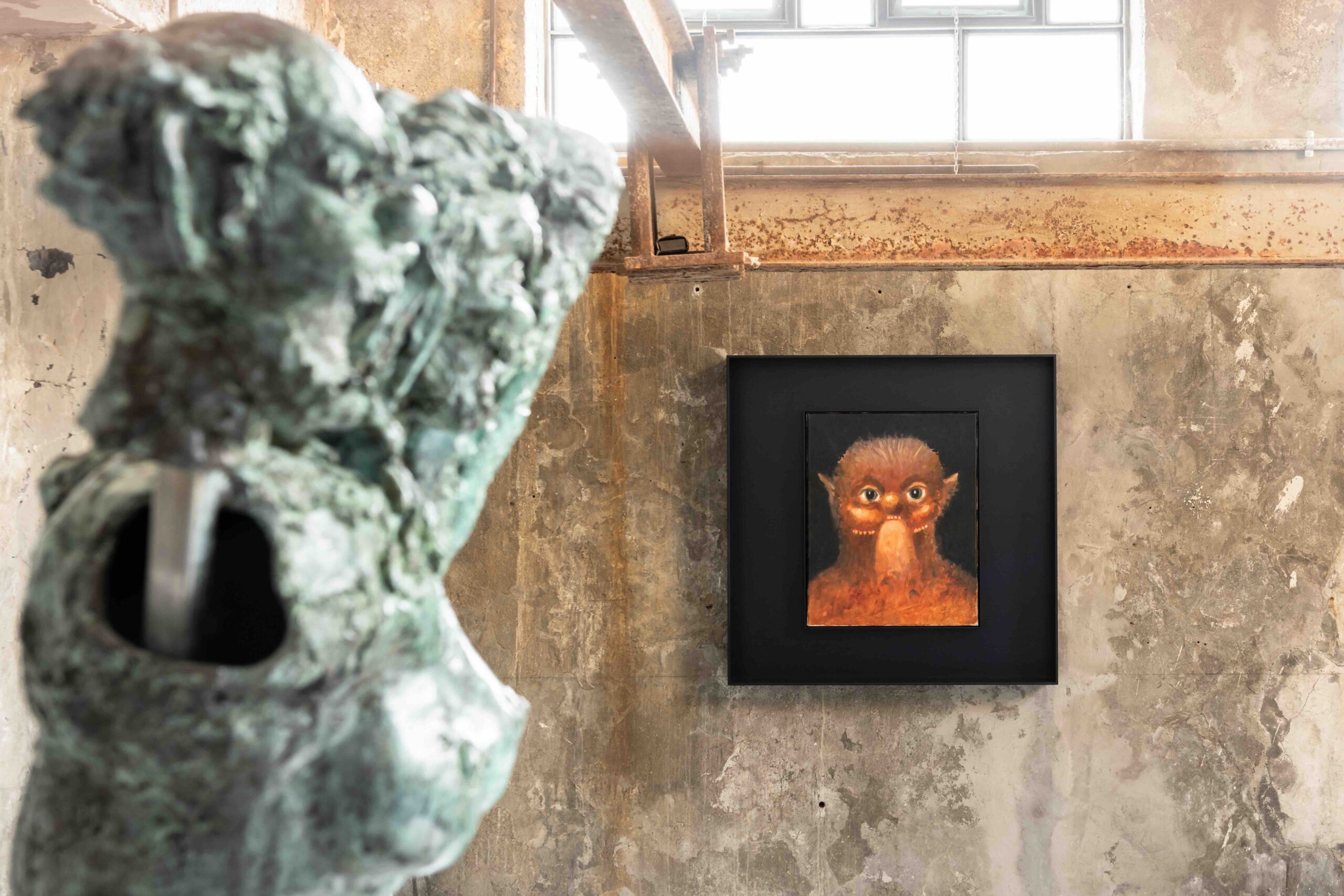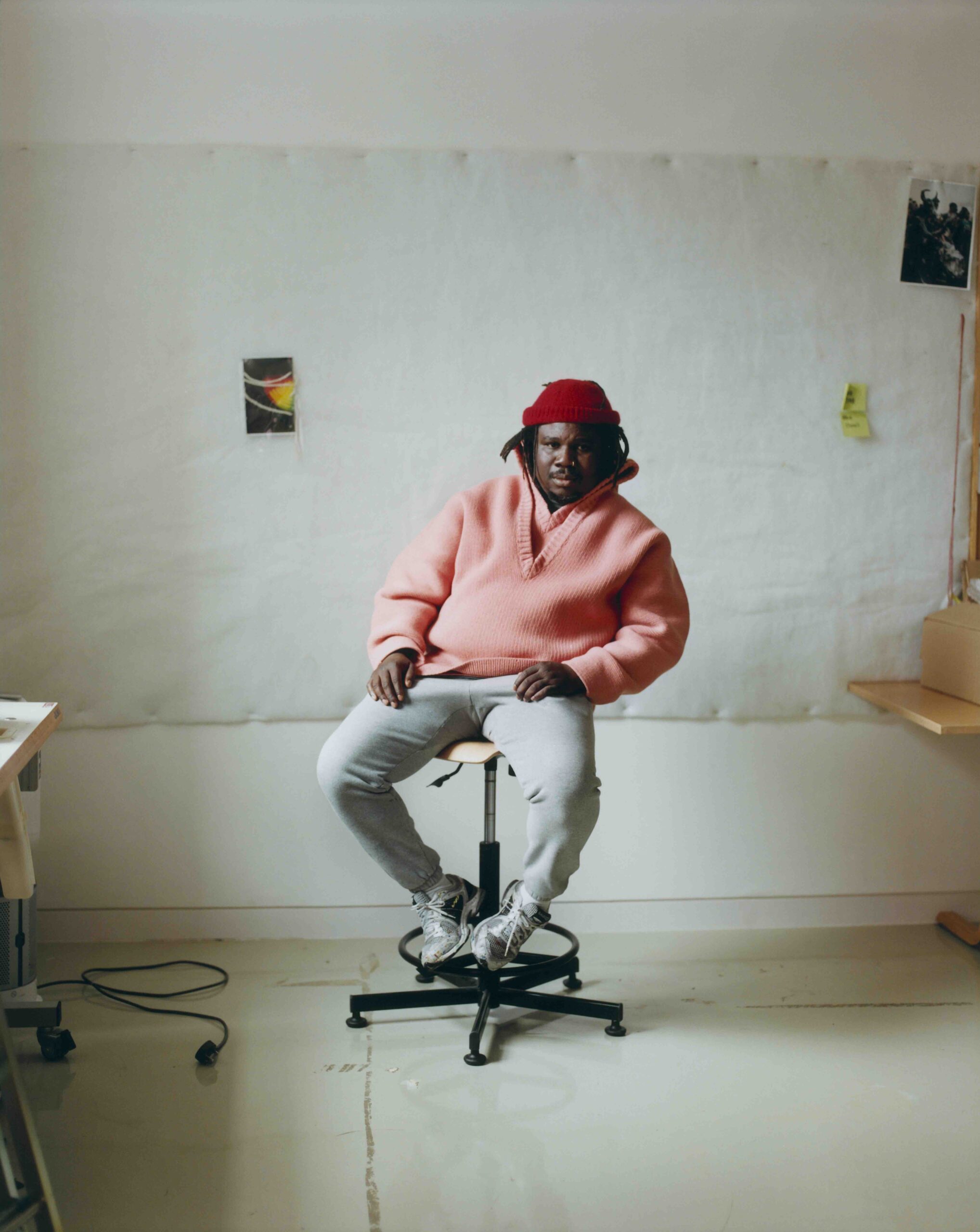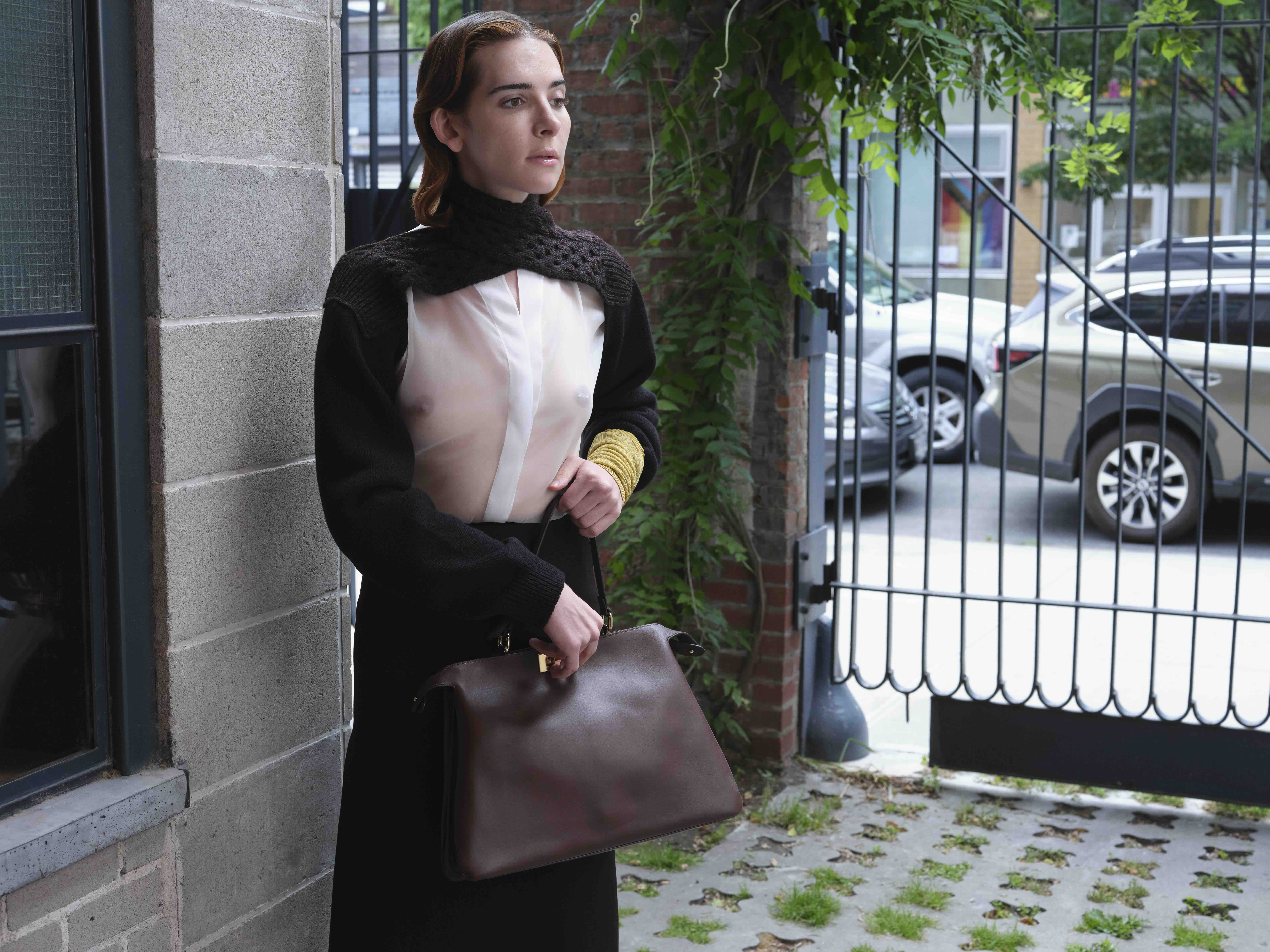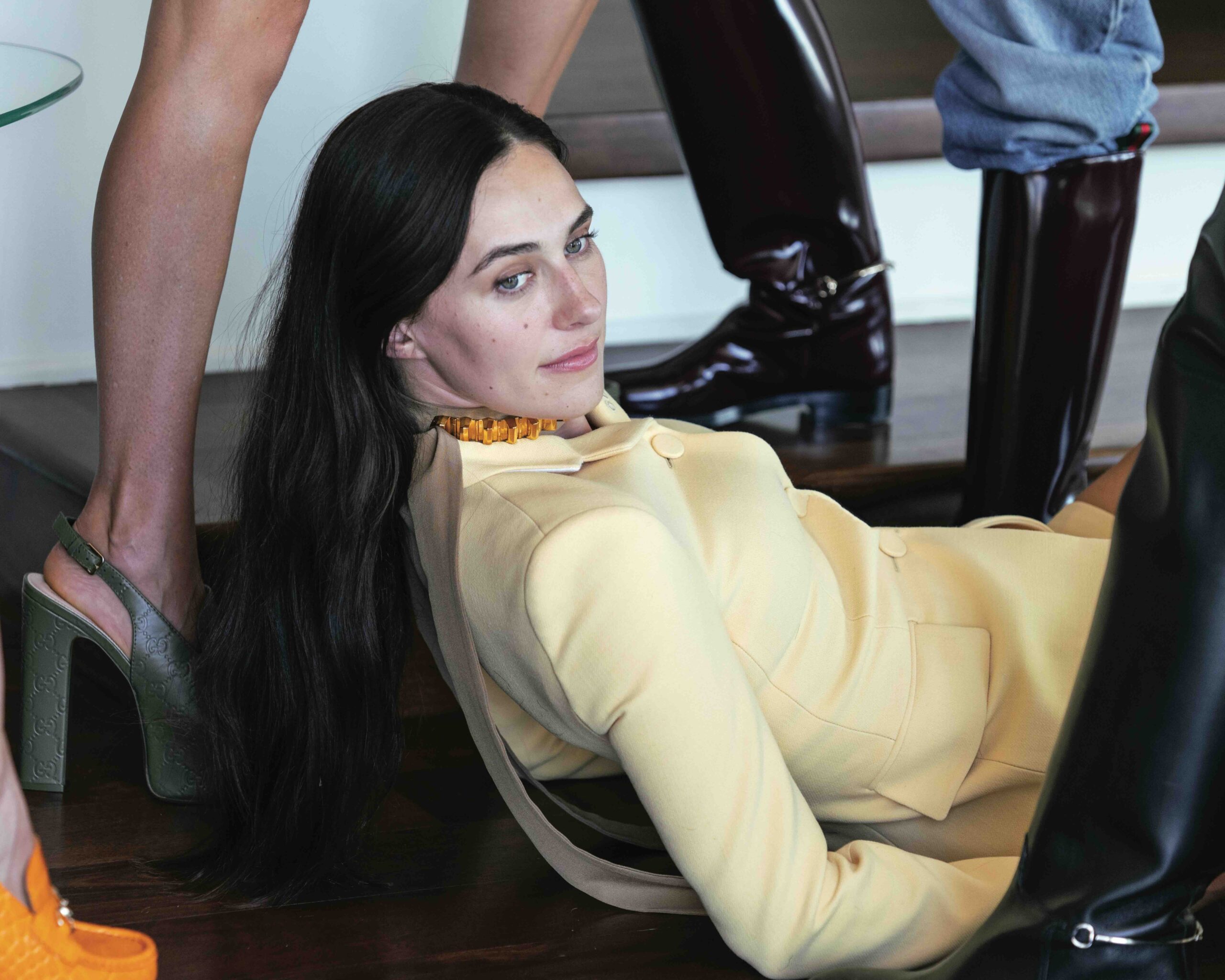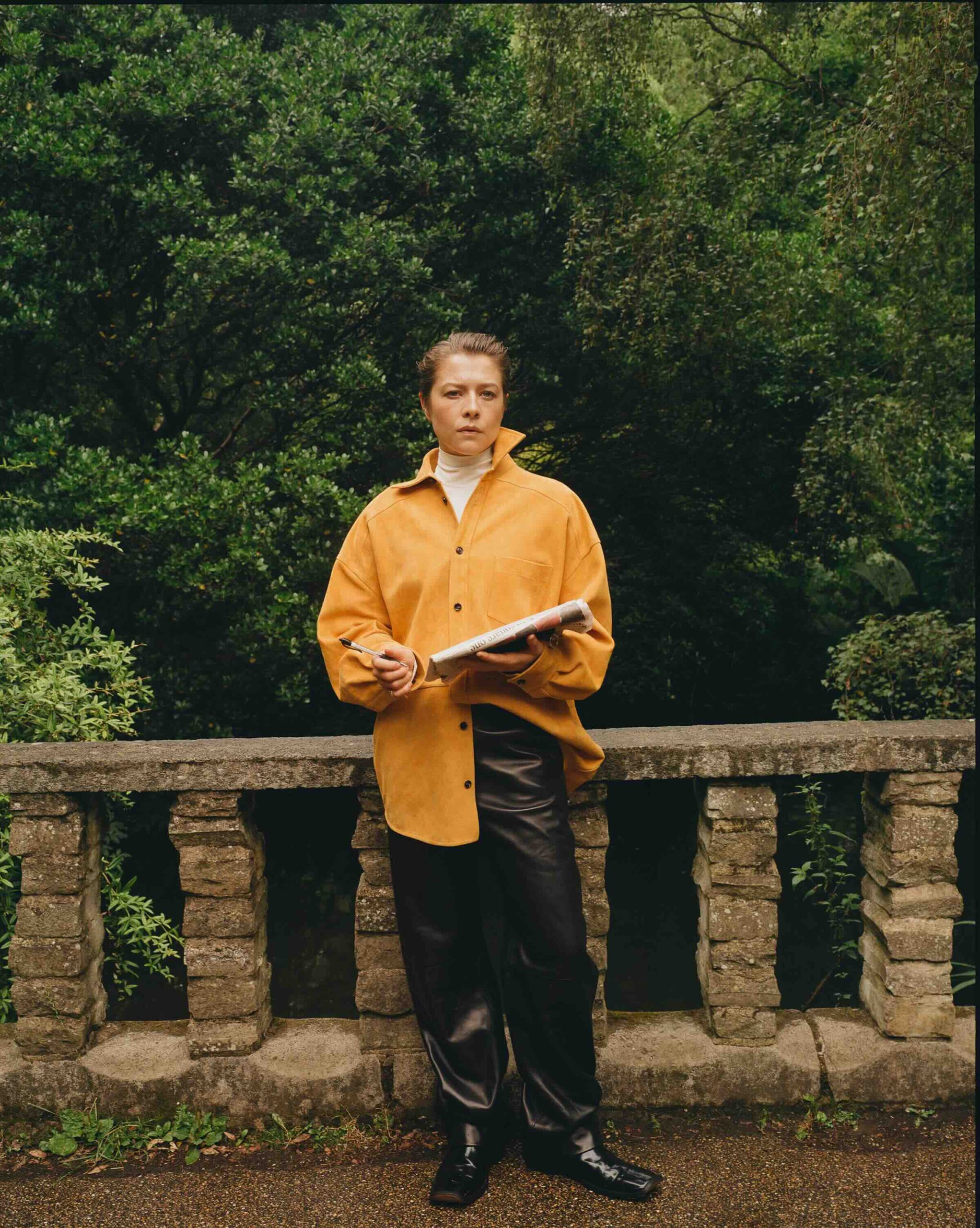FB Where and when should we start?
UF I don’t know where to start. Childhood?
FB Yes. When in your childhood did you have the first sign that you would become an artist?
UF No idea.
FB You really don’t remember when you did something and looked at it and had the feeling that it was art?
UF Most people who do anything with art have liked doing things since they were little and just never stopped. You see, almost every kid makes a bit of art but then most of us stop. We move on to other things, professions, and such. What is commonly understood as the “real world.” But some keep that place we found in art forever.
FB Why do some people feel the need to move on and others stay with it?
UF It’s a good question. Perhaps, contrary to the idea that art is important, it just becomes an obsolete form of expression to most people. At least in the form, you work in as a kid, where you move a crayon or paint across a paper and the movement makes something happen. There is this moment of: WOW! That directness and the lack of control are magic. As we develop new interests this sense of wonder goes somewhere. No idea where exactly it goes. Then some of us keep an affinity for this way of expression. It’s a passion.
For myself, it always made sense, more sense than a lot of the world that seems to be more important. But I never wanted to become an “artist.” I’m still on the brink, still questioning myself if I should become an artist or not.
FB You were never asked, by your parents, to try to do something else instead of being an artist or what you decided to be?
UF Oh no, I was never asked to become something specific, like a lawyer, never.
FB They never questioned your choices…
UF I guess as a parent, if your kid has self-drive, you let them do their thing as long as it does not have a self-destructive nature. And you know, my parents might have had all kinds of worries, but they didn’t voice them to me. You see, from an early age, I always refused a better education because I did not enjoy learning in a school environment.
FB You never felt the need to go to a University…
UF No, never. Even though I come from a family where most people are academics or educated in one way or another.
FB When was the first “sign” that art would be important in your life?
UF Well, it depends. I can put that in childhood or I can put that in my young teenage years, like twelve, thirteen when you make something and you find the first traces of a new world opening up in front of you. When you realize that it’s all a big adventure. I think I started making what you call an artwork when I was sixteen. It was an ugly abstract painting on yellow plexiglass.
FB What kind of stuff were you doing?
UF Different things, everything was new! I didn’t know any artists myself. Just the books filled with old paintings in my grandfather’s library. Brueghel, Van Gogh, Botticelli. But photography felt like the way to go. I liked photography, it was easy, it was everywhere and you could make something that looked great by simply pressing a button. That’s kind of what I pursued for a while and I still do. I’m still a photographer at heart…
FB …a photographer still?
UF Yeah, most of my works are based on or make use of photography at some stage. Drawing is the other thing, it’s easy, it does not have many demands and you can draw everything you want. Wallpapers, paintings, sculpture, everything is somewhat rooted in that… photography and drawing. The computer allows you to fuse the two, it becomes fluid. But I was also doing a lot of carpentry. Starting at eleven, twelve. Carpentry and construction have always been simple and a clear way to make money. That’s another thing I like: the physical element.
FB How has your work changed since we met…I think it was 1996…
UF How am I changing? You tell me.
FB To me it looks you kept moving in a constant flow with no real ruptures…
UF You mean the rupture of things like education?
FB No, I mean the rupture when someone stops growing suddenly and becomes self-referential.
UF Everything is self-referential, unfortunately, no? I can always see a lot of relations to previous things, the thought process is hardly ever new.
FB Your thought process doesn’t seem aged or aging.
UF Maybe thoughts and ideas don’t age the same way material things do. Do images age? Somehow they do. One’s use of it might shift—how we relate to them.
FB You have a special relationship with technology—you sometimes use very sophisticated forms of it, but at the end you never really see how your work is made. Or, at least it is not an issue.
UF I think it has nothing to do with technology. Personally, I prefer to clearly see how something is made or that I have no clue how it was made. If you don’t know how it’s made, for example, the toys we have as kids that come to us wrapped in pretty boxes, made by machines in factories that we can only imagine how they look, then there is a magic to that. On the other hand, if something is made in a way that you can understand or see, like a loaf of homemade bread, then that’s beautiful too. All the places in-between those two throw me off and take away from the illusion or the reality.
FB Tell me about a work of yours where you can see how it is made.
For myself, it always made sense, more sense than a lot of the world that seems to be more important. But I never wanted to become an “artist.” I’m still on the brink, still questioning myself if I should become an artist or not.
UF Let’s say the brick wall standing by a bed of fruits and vegetables. You know what you are looking at and it’s just what it is. It’s put together but not really made. Crude. Whatever energy or thought you put in it, putting it together stays visible. It’s right there with nothing to hide. If you try to make something deliberately beautiful, whatever that really means—we could also use the word perfection—one usually has to go a long way. Artwork is what it is at the end. Most of the time a piece of matter that someone tried to arrange in some way and we encounter it. That is what it is. There is the space between, where it is neither. Where you see it trying. Happens all the time. You get stuck halfway. Aborted efforts. They can have their charm too.
FB Are the candles complicated?
UF Not really, it’s like making a cake in a form. Sure, you can make a complicated cake…
FB I asked Angela, the manager of your studio, the other day if that series of works, Phantoms, were self-portraits…she told me that you are very adamant about them not to be seen as self-portraits.
UF Yes, why would it need to be a self-portrait if you use your own face? One’s face is just material, like everything else. Working with that does not make it necessarily more of a self-portrait than any other work.
FB But the candle with you sitting at the table is a self-portrait, right?
UF More so, that’s personal. A natural pose I would take at times. Like what I tried to find with all the other candles: the natural pose of how people relax between being something specific. Like you standing somewhere, looking at your phone. The natural go-to place where people are relaxed, not conscious of how they conduct themselves, not an image. Back to the self-portrait vs. using one’s own face in a work. The only person that will never complain when you do use that face is yourself. For me, that helped with being bold, at times aggressive, without feeling constricted by thinking that I do this to someone else’s visage. I’m always fascinated by artists that have a very clear and seemingly narrow oeuvre. It looks like they do the same thing, over and over again. It’s the opposite of my own way to go about it. So I wanted to explore that, how that would feel when you start with a given, in this case, the image of my own face. I ended up creating a little because I used three different pictures. Like light through a prism, where everything you throw at it gets fractured through. Then you see how far you can fan that up in a way.
FB What do you think of boredom?
UF Boredom is okay. Being okay with it is key. There is a certain relaxation in boredom. A place where you don’t expect—
FB The danger is to find boredom comfortable.
UF Yeah, when it becomes stagnant. There is no more room to float freely when it becomes repetitive.
FB Like Philip Glass’s music…
UF I like Philip Glass, that’s a beautiful version of repetition. Maybe even boredom.
FB Because in the end it is the same work and you feel safe, if not comfortable, with it.
UF One work. Yeah, in a way, maybe. As I said, I always liked artists that work in repetition. I envy the ability to go in, in, in, in, in. You could tie that together with the question you asked earlier about being self-referential. That focus can make room for beautiful things. Like nature, the endless reception of the same, grass, clouds, animals, every single one slightly different than the other. Like us people, all different but the same.
FB You wish you were that kind of artist or person?
UF No, I’m okay with who I am, I just say that I envy this ability. Not for how I imagine the actual making of a repeating type of work would feel for me. But envy it for the practice and the outcome. I imagine that repetition gives you a place to relax in the making of your own work and the results can create a very concise oeuvre. An image that describes a point of view very precisely.
FB Is your goal to be like Duchamp or reach a similar outcome?
UF No! That’s done. Perfect.
FB There is an authenticity in Duchamp’s work. Is your work authentic or sincere?
UF I will not know. These words confuse me. I just move forward to where something opens up, without a master plan.
FB The show you had in London at Sadie Coles had this series of drawings you did with your iPhone. How did you do them?
UF I just did them without a specific technique. Playing around. These drawing apps allow you to fuse categories like drawing, painting, photography, and digital retouching that used to be separate mediums. The sophistication of these apps is pure bliss. A modern-day folk art tool.
FB Outsider art?
UF No, it’s insider art. [laughs]
UF I like Philip Glass, that’s a beautiful version of repetition. Maybe even boredom.
FB Because in the end it is the same work and you feel safe, if not comfortable, with it.
UF One work. Yeah, in a way, maybe. As I said, I always liked artists that work in repetition. I envy the ability to go in, in, in, in, in. You could tie that together with the question you asked earlier about being self-referential. That focus can make room for beautiful things. Like nature, the endless reception of the same, grass, clouds, animals, every single one slightly different than the other. Like us people, all different but the same.
FB You wish you were that kind of artist or person?
UF No, I’m okay with who I am, I just say that I envy this ability. Not for how I imagine the actual making of a repeating type of work would feel for me. But envy it for the practice and the outcome. I imagine that repetition gives you a place to relax in the making of your own work and the results can create a very concise oeuvre. An image that describes a point of view very precisely.
FB Is your goal to be like Duchamp or reach a similar outcome?
UF No! That’s done. Perfect.
FB There is an authenticity in Duchamp’s work. Is your work authentic or sincere?
UF I will not know. These words confuse me. I just move forward to where something opens up, without a master plan.
FB The show you had in London at Sadie Coles had this series of drawings you did with your iPhone. How did you do them?
UF I just did them without a specific technique. Playing around. These drawing apps allow you to fuse categories like drawing, painting, photography, and digital retouching that used to be separate mediums. The sophistication of these apps is pure bliss. A modern-day folk art tool.
FB Outsider art?
UF No, it’s insider art. [laughs]
UF I like Philip Glass, that’s a beautiful version of repetition. Maybe even boredom.
FB Because in the end it is the same work and you feel safe, if not comfortable, with it.
UF One work. Yeah, in a way, maybe. As I said, I always liked artists that work in repetition. I envy the ability to go in, in, in, in, in. You could tie that together with the question you asked earlier about being self-referential. That focus can make room for beautiful things. Like nature, the endless reception of the same, grass, clouds, animals, every single one slightly different than the other. Like us people, all different but the same.
FB You wish you were that kind of artist or person?
UF No, I’m okay with who I am, I just say that I envy this ability. Not for how I imagine the actual making of a repeating type of work would feel for me. But envy it for the practice and the outcome. I imagine that repetition gives you a place to relax in the making of your own work and the results can create a very concise oeuvre. An image that describes a point of view very precisely.
FB Is your goal to be like Duchamp or reach a similar outcome?
UF No! That’s done. Perfect.
FB There is an authenticity in Duchamp’s work. Is your work authentic or sincere?
UF I will not know. These words confuse me. I just move forward to where something opens up, without a master plan.
FB The show you had in London at Sadie Coles had this series of drawings you did with your iPhone. How did you do them?
UF I just did them without a specific technique. Playing around. These drawing apps allow you to fuse categories like drawing, painting, photography, and digital retouching that used to be separate mediums. The sophistication of these apps is pure bliss. A modern-day folk art tool.
FB Outsider art?
UF No, it’s insider art. [laughs]
UF I like Philip Glass, that’s a beautiful version of repetition. Maybe even boredom.
FB Because in the end it is the same work and you feel safe, if not comfortable, with it.
UF One work. Yeah, in a way, maybe. As I said, I always liked artists that work in repetition. I envy the ability to go in, in, in, in, in. You could tie that together with the question you asked earlier about being self-referential. That focus can make room for beautiful things. Like nature, the endless reception of the same, grass, clouds, animals, every single one slightly different than the other. Like us people, all different but the same.
FB You wish you were that kind of artist or person?
UF No, I’m okay with who I am, I just say that I envy this ability. Not for how I imagine the actual making of a repeating type of work would feel for me. But envy it for the practice and the outcome. I imagine that repetition gives you a place to relax in the making of your own work and the results can create a very concise oeuvre. An image that describes a point of view very precisely.
FB Is your goal to be like Duchamp or reach a similar outcome?
UF No! That’s done. Perfect.
FB There is an authenticity in Duchamp’s work. Is your work authentic or sincere?
UF I will not know. These words confuse me. I just move forward to where something opens up, without a master plan.
FB The show you had in London at Sadie Coles had this series of drawings you did with your iPhone. How did you do them?
UF I just did them without a specific technique. Playing around. These drawing apps allow you to fuse categories like drawing, painting, photography, and digital retouching that used to be separate mediums. The sophistication of these apps is pure bliss. A modern-day folk art tool.
FB Outsider art?
UF No, it’s insider art. [laughs]
FB So you erased yourself from the work…
UF It’s much better with Rudy standing there. But you don’t need to know who he and or what the sculpture is.
FB Ultimately it’s just about looking… looking at art… any art.
UF Yeah. Growing up in Florence, you must know a thing or two about that. Old stone in human shape.
FB But the work is also an equalizer between the viewer who’s temporary and art that could be eternal right?
UF Yes both, the viewer and the sculpture, they are the same, you know? They undergo the same treatment. Both are doomed to disappear.
FB So the work is about reality?
UF Maybe. Who knows what that is anyway. Ultimately we will undergo the same treatment, human or artwork. We both will vanish.
